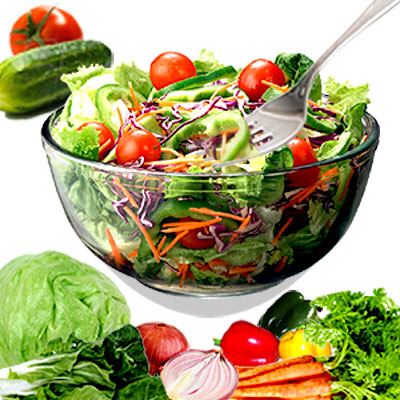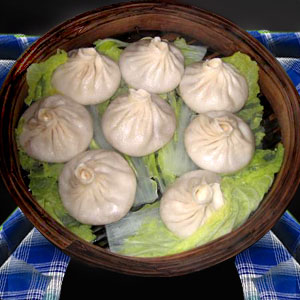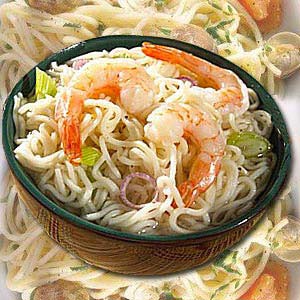Chamomile

From the time of the early Egyptians and Greeks, chamomile has been regarded as a sacred herb - one that was packed with curative and healing properties. Chamomile is enriched with soothing relaxing properties that work against stress, menstrual cramps and pains. Chamomile is available in oil, tincture, dried tea or capsule form. From digestive problems to blisters, headaches to irritable bowel syndrome, chamomile flowers can provide relief. Read on to find out the benefits of chamomile tea.
Chamomile
The chamomile herb and flower has been hailed since ancient times for its medicinal and curative properties. The word chamomile finds it's origin in the Green words - chamos (ground) and melos (apple). The gentle apple-like aroma of chamomile is used in beauty products. Lotions and oils infused with chamomile are used to reduce eczema itching and other skin inflammation. Chamomile preparations are used for treating sensitive young skin of infants suffering from skin conditions.
You can mix chamomile flowers with cream and create an infusion as a facial cleanser. Treat your tired eyes with a cool compress of chamomile tea. A tincture of chamomile flowers is used to treat summer diarrhea in children and the essential essence of the flowers can be use in poultices for curing inflammatory pain, congested neuralgia and swelling. Use chamomile lotions for relief from toothache and earaches.
Chamomile is widely used to relieve women from menstrual cramps. The antiseptic and muscle relaxant properties of chamomile promote relaxation and relieve stress. It can be of help to insomniacs. Use chamomile mouthwash for soothing mouth sores and gum disease. The many uses of chamomile are listed below:
- Insect repellant
- Skin lightening and cleansing
- Hair conditioning
- Anti-dandruff rinse
- Treating nervous indigestion and gastritis
- Relieving stress and calming the digestive system
- Treating stomach cramps, headaches and spastic pain
Chamomile Tea Benefit
Drinking chamomile tea before bedtime has been followed for centuries on account of its ability to calm the nervous system and soothe gastrointestinal disorders. It's mild flavor makes chamomile tea a favorite beverage with many. You can brew hot chamomile tea in a pot of boiling water for about 3 - 7 minutes. If you prefer to drink iced chamomile tea, strain the hot brew and top up with cold water. Garnish for choice. Tea made with Roman chamomile is stronger.
A tisane of chamomile is caffeine free and boasts of many benefits much like green tea. Ensure that you cover the pot in which you are brewing chamomile tea since the medicinal value of the flowers is lost on evaporation. Let the tea decoction stand for a few minutes before straining it. Add ginger to chamomile tea and you can seek relief from indigestion and gout and periodic headache.
Mild chamomile tea in large doses is sometimes given to those suffering from fever and sore throat. The usual dosage for an infusion is about three grams of the flower heads in one half cup of hot water, taken three to four times a day between meals.
Chamomile Flower
The chamomile flower is an annual herb that is edible and tasty. Add it to your salads or brew a decoction of chamomile flowers. The active properties of chamomile are contained within the flower heads. Chamomile flowers contain volatile oils including proazulenes. They produce chamazulene - an anti allergen. Therefore chamomile is used to treat hay fever and asthma. Chamomile oils are rich in alpha bisabolol and bisabolol oxides too.
Ensure that you buy quality chamomile or chamomile oils. A vapor inhalant with chamomile flowers can be used to treat bronchial irritations. A salve of crushed chamomile flowers can be applied on hemorrhoids and wounds. Make a pot pourri of dried chamomile flowers and let the aroma fill your home. Blend them with bergamot, geranium, lavender, lemon or marjoram for a heady fruity aroma. Stay away from chamomile if you have a known allergy to flowers in the daisy family.
Top of the Page: Chamomile
Tags:#chamomile #chamomile tea #chamomile flower #chamomile tea benefit
 Food and Nutrition Facts
Food and Nutrition Facts Chamomile
Parsnip Soup
Dim Sum
Gazpacho Soup
Whole Grain Cereal
Jicama Nutrition
Bok Choy Stir Fry
Chia Seeds Benefits
Teff Nutrition
Kaniwa
Flax Seed
Wheatgrass Benefits
Kelp Benefits
Types of Chili Peppers
Medicinal Benefits of Pomegranate
Arugula Leaves
Maca Root
Pitaya Fruit
Benefits of Celery
Leek
Asparagus Benefits
Oyster Stew
Oyster Mushroom
Lupin Beans
Quinoa
Freekeh
Extra Virgin Olive Oil
Dill Pickle
Sauerkraut
Fat Burning Foods
Nutrition Chart
Food Combining
Calorie Counter
calories ...
Non Alcoholic Beverage
Punch Recipes
Food Label Nutrition
Homemade Sausages
Cooking Steak
Eating on a Budget
Budget Friendly Recipes
Quick Recipes
 Healthy Packed Lunch
Healthy Packed Lunch Overnight Oats Recipes
Eggplant Casserole
Brunch Recipes
Burrito Recipes
Muffin Recipes
Cupcake Frosting
Apple Crisp
Stir Fry Cooking
Seafood Salad Recipe
Cooking Corn on the Cob
Finger Food Recipe
Sandwich Recipe
Bread Stuffing Recipes
Easy Chili Recipes
Picnic Recipes
Edible Mushroom Recipes
Mushroom Soup Recipes
Dip Recipe
Tapas Recipe
Corned Beef Recipe
Canned Salmon Recipe
Tilapia Recipes
Crumb Cake
Flourless Chocolate Cake
Regional Food
 Lasagna Recipe
Lasagna Recipe Peruvian Ceviche
Chinese Food Recipe
Vietnamese Food Recipe
Malaysian Food
Korean Food Recipe
Indian Curry Recipe
Edible Rice Paper
Mexican Food Recipe
Quesadilla
Guacamole Dip
Italian Food Recipe
Spanish Food Recipe
Kosher Food
Falafel Recipe
Tandoori Chicken
Noodles
Canape
Couscous
Meatloaf
Chowder
Gumbo Recipe
Crockpot Recipes
Moroccan Food
Healthy Food
Pre Workout Snack
Matcha Tea
Simple food Swaps to Lose Weight
Foods to Beat Stress
Foods to beat Insomnia
Bone Density Foods
Prebiotic Foods
Kefir Grains
Agave Nectar
Spicy Trail Mix
Pesto Sauce
Homemade Hummus
Crab Cake Sauce
Bamboo Shoots Nutrition
Lemon Grass Plant
Butter Beans Recipes
Loose Green Tea
Seaweed Nutrition
Healthy Food
Low Fat Granola Bar
Steel Cut Oatmeal
Fruit Pizza
Pizza Toppings
Green Smoothie
Healthy Meal Planning
Delicious Mealtime Recipes
Heart Healthy Fats
Healthy Heart Recipe
Healthy Dinner Recipe
Healthy Dessert Recipe
Healthy Fast Food
Healthy Kid Recipe
Probiotic Food
Diabetic Friendly Foods
Fruit Salad Recipe
Bread Pudding
Tofu Recipe
Oat Bran
Broccoli Salad
Avocado Recipe
Iron Rich Food
Brain Foods
Antioxidant Food
Natural Diuretic
Low Fat Cooking Tips
Rice Pilaf Recipe
Low fat Chicken Recipe
Food Tips

Sous Vide Cooking Technique
Natural Sugar Substitute
Stevia Sugar Substitute
Sunflower Seeds Nutrition
Bouquet Garni
Cake Decorating Tips
High Satiety Foods
Thanksgiving Dinner
Safe Food Storage
Frozen Food Storage Tips
Cold Storage Food Tips
Leftover Recipe
Food Pyramid
Dairy Free Food
Microwave Cooking
Food Intolerance
Homemade Ice Cream
Apple Cider Vinegar
Benefits of Honey
Beverage Cooler
Food Poisoning Symptom
Food Allergy Symptom
Food Addiction
Top of the Page: Chamomile
Popularity Index: 101,376

